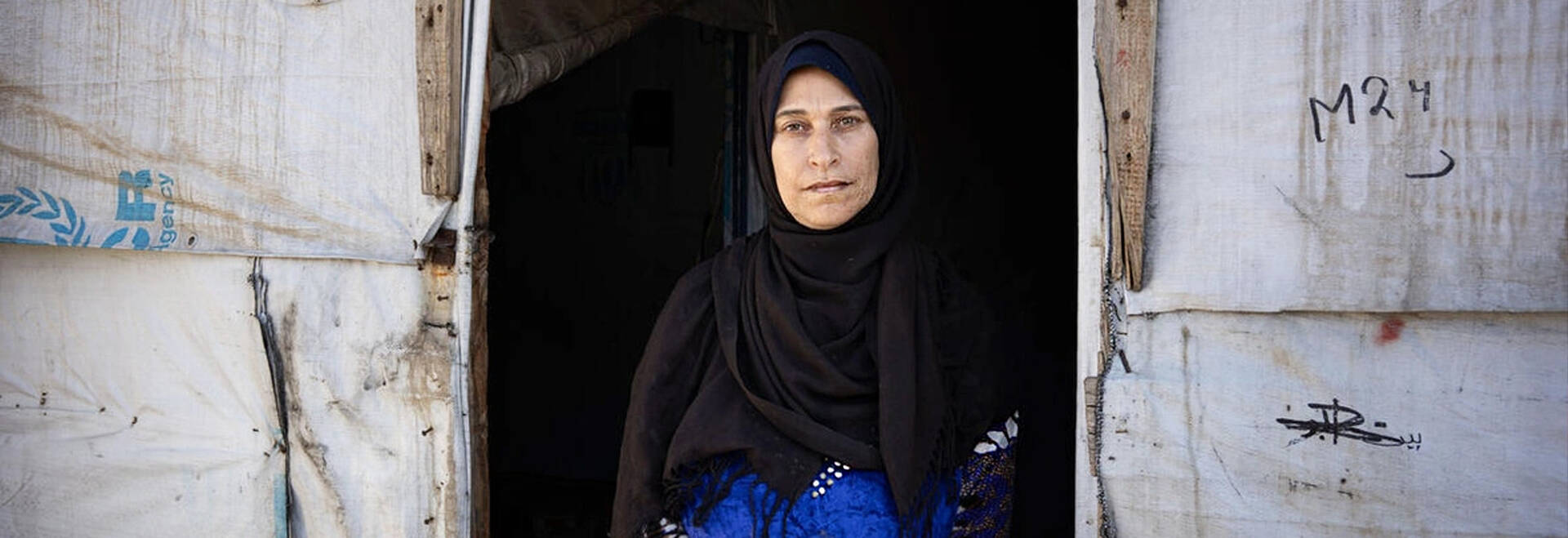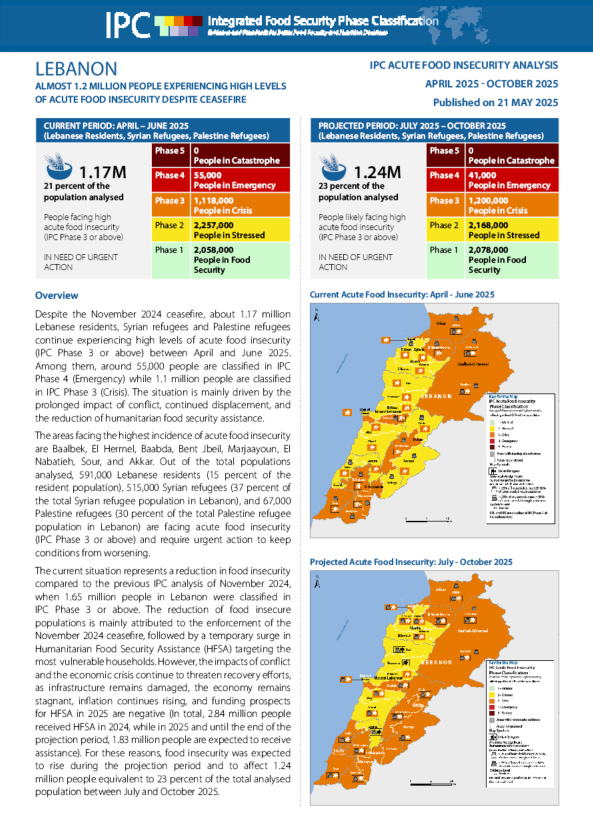
- © UNHCR
LEBANON: Nearly 1.2 million people experiencing high levels of acute food insecurity despite ceasefire
Approximately 1.17 million people in Lebanon (including Lebanese residents, Syrian refugees and Palestine refugees) continue facing high levels of acute food insecurity (IPC Phase 3 or above) between April and June 2025. This is a slight improvement compared to the previous IPC analysis when 1.65 million people were classified in IPC Phase 3 or above. This is mainly attributed to the enforcement of the November 2024 ceasefire, along with a temporary surge in Humanitarian Food Security Assistance (HFSA) targeting the most vulnerable households. However, the impacts of conflict and the economic crisis in Lebanon continue to threaten recovery efforts, as infrastructure remains damaged, the economy remains stagnant, inflation continues rising, and funding prospects for HFSA in 2025 are negative.
The areas facing the highest incidence of acute food insecurity are Baalbek, El Hermel, Baabda, Bent Jbeil, Marjaayoun, El Nabatieh, Sour, and Akkar. Out of the total populations analysed, 591,000 Lebanese residents (15 percent of the resident population), 515,000 Syrian refugees (37 percent of the total Syrian refugee population in Lebanon), and 67,000 Palestine refugees (30 percent of the total Palestine refugee population in Lebanon) are facing acute food insecurity (IPC Phase 3 or above) and require urgent action to keep conditions from worsening.
Download the report
Join our mailing list

